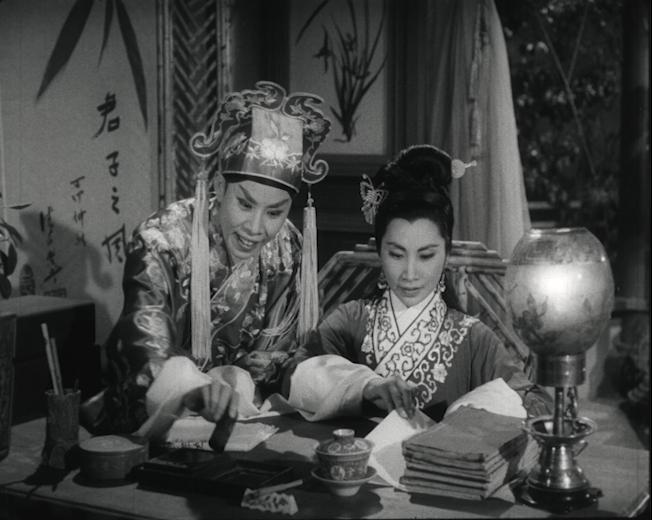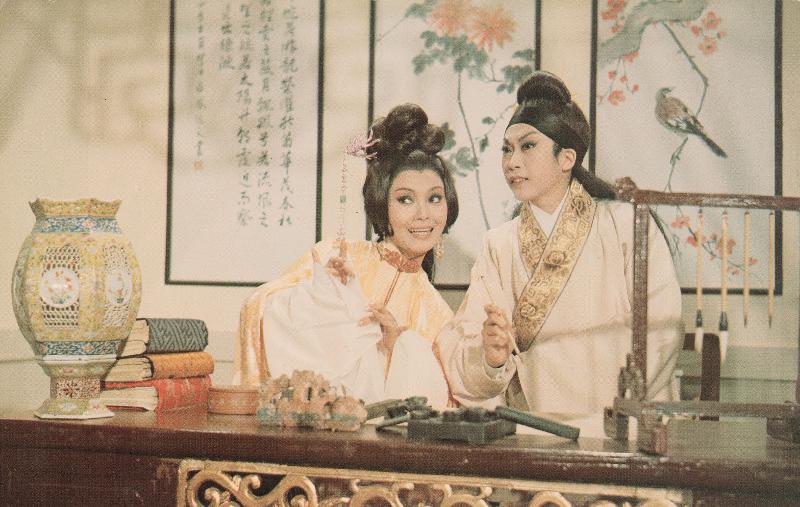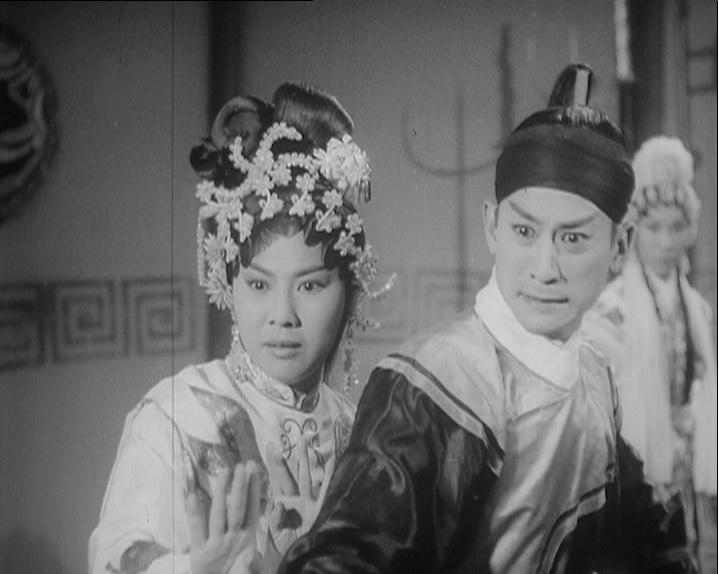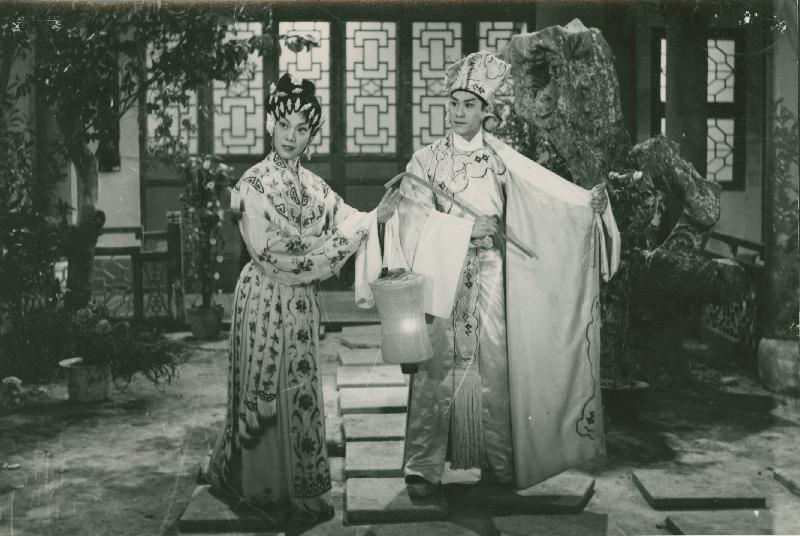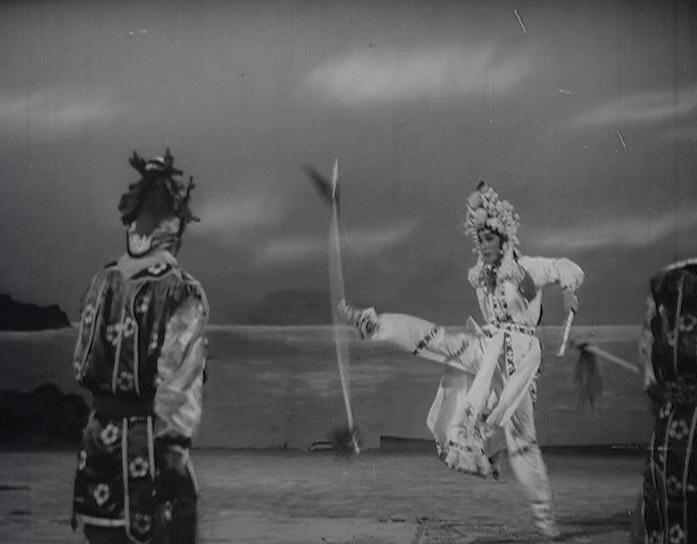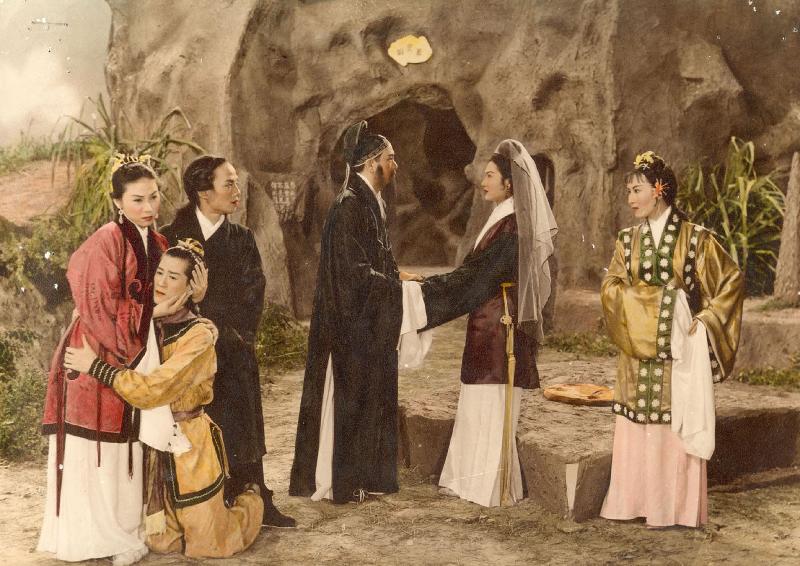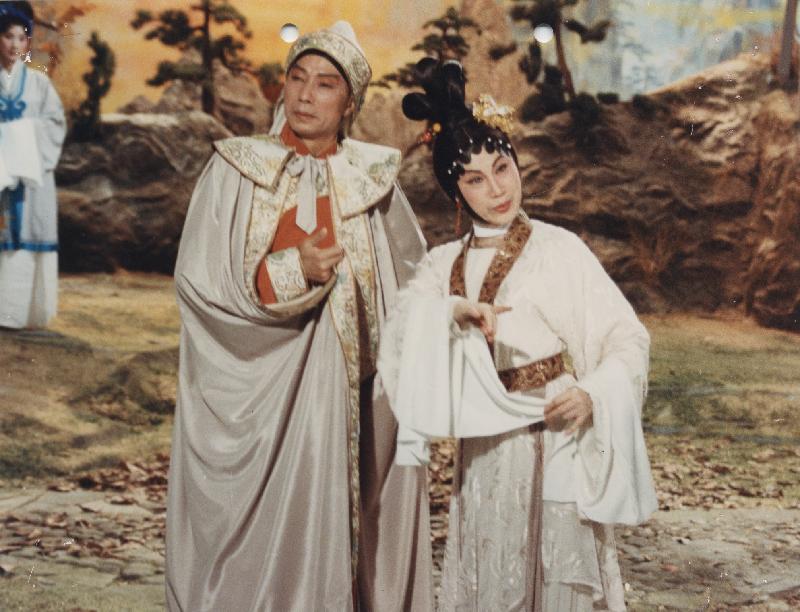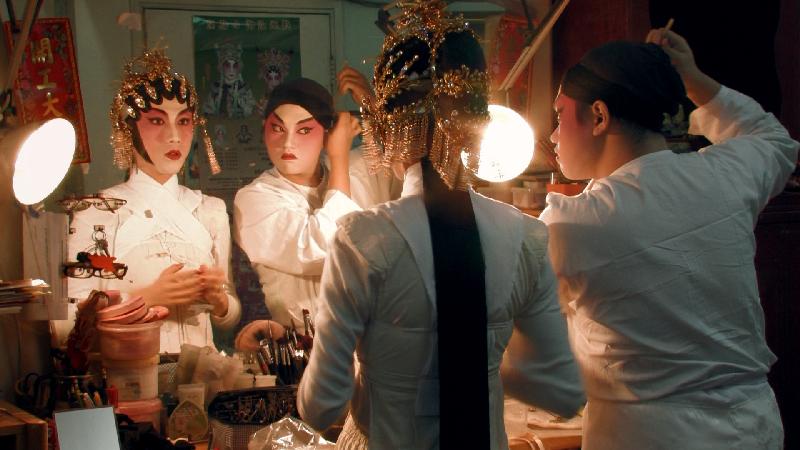Film Archive to celebrate 10th Anniversary of Inscription of Cantonese Opera onto Representative List of the Intangible Cultural Heritage of Humanity (with photos)
******************************************************************************************
The opening film is HKFA's restored version of "Butterfly and Red Pear Blossom" (1959), which will be screened on September 4 at the Grand Theatre of the Hong Kong Cultural Centre. The film features a courtesan played by Pak Suet-sin and a scholar played by Yam Kim-fai, who fall in love as they exchange poems. Their romance is thwarted, however. Director Lee Tit’s mise-en-scène, Tong Tik-sang’s libretto and script as well as the performances of Yam and Pak, Lan Chi Pak and Leung Sing-por have forged this masterpiece that captures the essence of Cantonese opera, literature and film.
Other films will be screened at the HKFA Cinema from September 7 to October 27. Some of the screenings will be accompanied by seminars and post-screening talks respectively hosted by acclaimed operatic artist Professor Yuen Siu-fai, Cantonese opera study experts Professor Li Siu-leung, Professor Chan Sau-yan and Cheung Man-shan; film study experts and critics Dr Stephanie Ng, Lau Yam, Sam Ho, Janice Chow, Michael Lau, Thomas Shin, Tsang Siu-wang and Winnie Chan; and directors Shu Kei and Cheuk Cheung in Cantonese with free admission.
In "The Legend of Purple Hairpin" (1959) starring Yam Kim-fai and Pak Suet-sin, Lee Tit, through his directing style showcased vividly the cinematic structure and rhythm contained in Tong Tik-sang's script as well as the singing, gesturing and stylised traditional Cantonese operatic movements of the star-studded opera cast. Over a decade later, Lee made a new version of "The Legend of Purple Hairpin" (1977), featuring Lung Kim Sung and Mui Suet-si. In this film he often zoomed in on the actors and cut between close-ups of each character. This all-colour version also allowed Lee to further express the characters’ emotions. In addition to playwriting, Tong also made a screen adaptation from his original repertoire. In "The Story of Tung Siu-yuen" (1950), Tong removed the framework of the original and then re-arranged the sequence of the scenes to elevate the dynamics between the protagonists, making his work more cinematic.
With his Cantonese opera background, Wong Hok-sing skilfully merged the elements of Cantonese opera with cinematic techniques in "The Revenge Battle" (1964). He used montage sequences to show the growing up of the character and adopted the technique undercranking to increase motion in the combat scenes. "The Great Red Robe" (1965) depicts Hai Rui accusing the corrupt Prime Minister Yan Song of 10 major crimes. Using close-up shots, Wong magnified the righteousness of Yam Kim-fai and the stateliness of Lan Chi Pak. The scene portraying Yam and Lan's one-on-one debate is in a clean and fast-paced flow that reaches a heart-pounding climax. Although the existing cut is an incomplete version, it captures the most-climatic scenes. In the cult-flavoured Cantonese opera film "The Story of Muk Kwai-ying, Part One" (1965), Wong used numerous film techniques such as fast-motion, wire work and jump-cuts to create a world full of beasts and magic. Wong's direction in "The Reincarnation of Lady Plum Blossom" (1968) combined well with Nam Hung’s unique singing style. Together with Connie Chan Po-chu’s portrayal of a passionate but weak scholar, the movie tells of a tragic ghostly romance.
Yam Kim-fai paired up with Yu Lai-zhen in Chu Kea's "Law Shing at the Gate" (1962) to portray a love story through an alternating series of combat fighting and singing scenes. In "How Fifth Madam Chiu Went Far and Wide in Search for Her Husband" (1959), Chu utilised mostly medium and close-up shots to closely capture the singing and expressions of the characters. His smooth camerawork enhanced the sad scenes performed by Fong Yim-fun.
In "The General and the Tyrant" (1961), Fung Fung used multiple high-angle cameras to show the tension and momentum of the war, with the effect helped by meticulously made props. In a scene where Yam Kim-fai's eyes are gouged out, a pair of lifelike eyeball props are used, with film editing and make up well utilised to express the brutality. Fung's "Ten Years Dream" (1961) follows visually impaired Fung Wong Nui and Mak Bing-wing falling in love through hearing and touching. The cinematography of the film is unique as all acts open and close with stage-like tableau compositions complete with stage curtains and pillars, which transpose the audience to an actual stage.
Cantonese opera performers' moves and stunts in fighting scenes are fully captured in films with the help of a wide shot and one continuous take. Wong Fung in "A Child was Born under Bridge" (1962) used a single shot to film the duelling scene, establishing as indubitable proof of the acclaimed daomadan (female lead in a martial role) Yu So-chow's signature stunt '13 spears'. Lung To, on the other hand, used continuous takes to enhance the romantic mood in the scene where the princess Pak Suet-sin weds the prince in distress – Yam Kim-fai in a shabby hut in "Happy Wedding" (1959). "Random Harvest" (1960) is another noteworthy work of Lung blending Cantonese opera and film, with the movie focusing more on the intricate plot than the crafts of opera singing and postures.
Ng Wui in his blockbuster, "The Precious Lotus Lamp" (1956) set a precedent in arranging musicians on site to create a sense of immediacy for audiences. Directed by Chun Man-to, "The Dutiful Daughter Chu-chu" (1966) follows Connie Chan Po-chu, a complete novice in opera, learning Cantonese opera from Lam Kar-sing and Lan Chi Pak, through which she portrays a realistic opera performance at the time. Lan also made a rare but refreshing appearance in a suit in the film.
In "Princess Chang Ping" (1976), played by Lung Kim Sung and Mui Suet-si, John Woo incorporated the act 'Negotiating with the Qing Emperor' into his work to make the film closer to the original play. In Chor Yuen's "The Legend of Lee Heung Kwan" (1990), the camera movement perfectly matched with the rhythm of music, with Chor creatively using lighting to mimic a stage 'curtain down' effect. The duet scene between Hung Sin Nui and Law Ka-bo near the end of the film is a precious legacy of 'Nui style' and 'Shrimp style' vocal performances.
Cheuk Cheung's documentary "My Way" (2011) tells of the struggle of two young Cantonese opera enthusiasts who aspire to play the female roles in this art form. "Goddess of Mercy Celebrates Her Birthday at Heung Fa Shan" (1966) is a record of the Wah Kong Birthday Theatrical Festival organised by the Chinese Artists Association of Hong Kong. It documents the actual performance onstage and the backstage activities, which is particularly significant to the studies of Cantonese opera of that era.
All films are in Cantonese. "Butterfly and Red Pear Blossom", "Princess Chang Ping" and "My Way" are with Chinese and English subtitles; "The Reincarnation of Lady Plum Blossom" and "The Precious Lotus Lamp" are with Chinese subtitles; "The Story of Tung Siu-yuen" and "A Child was Born under Bridge" are without subtitles; other films are only with Chinese lyrics.
Tickets priced at $45 are now available at URBTIX (www.urbtix.hk). For credit card telephone bookings, please call 2111 5999. For programme details, please call 2739 2139 or visit www.filmarchive.gov.hk/en_US/web/hkfa/programmesandexhibitions/programmes/chinese-opera/index.html.
Ends/Sunday, August 4, 2019
Issued at HKT 11:00
Issued at HKT 11:00
NNNN





